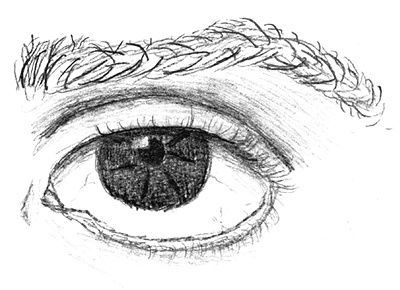All Nonfiction
- Bullying
- Books
- Academic
- Author Interviews
- Celebrity interviews
- College Articles
- College Essays
- Educator of the Year
- Heroes
- Interviews
- Memoir
- Personal Experience
- Sports
- Travel & Culture
All Opinions
- Bullying
- Current Events / Politics
- Discrimination
- Drugs / Alcohol / Smoking
- Entertainment / Celebrities
- Environment
- Love / Relationships
- Movies / Music / TV
- Pop Culture / Trends
- School / College
- Social Issues / Civics
- Spirituality / Religion
- Sports / Hobbies
All Hot Topics
- Bullying
- Community Service
- Environment
- Health
- Letters to the Editor
- Pride & Prejudice
- What Matters
- Back
Summer Guide
- Program Links
- Program Reviews
- Back
College Guide
- College Links
- College Reviews
- College Essays
- College Articles
- Back
The Eye of Justice
80 years ago, surveillance cameras that could observe every person’s actions were a thing of science fiction, a figment of people’s imagination. When surveillance cameras were first utilized in public places, they held great promise in providing law enforcement with the upper hand in apprehending criminals, deterring crime, and acquitting the innocent. Despite concerns of people’s privacy being infringed upon, surveillance cameras have since cast its fuzzy black eye on all corners of the earth and have improved human society in numerous ways, which is why more surveillance cameras should be installed in public places.
Among the major successes cited for the surveillance of people is the ability to catch criminals. In most urban public places, there are at least a few surveillance cameras capturing the perpetrator of crimes. On April 15th 2013, two pressure cooker bombs tore through Boston during the city’s annual marathon race, turning scenes of jubilation into scenes of pure terror and destruction. Within days, the FBI had gone from having a few leads to releasing photos taken by various surveillance cameras that capture the faces of two suspects. Subsequently the suspects were identified and caught. Thanks to the help of these attentive machines, offenders have been recognized and apprehended. In many abduction cases, lives have been saved, families reunited because of surveillance cameras. Without surveillance cameras, identifying suspects and bringing them to justice would require strenuous investigations that would often result in murderers and criminals retaining their undeserved liberty.
Imagine you wanted to steal a candy from your friend’s unattended bag. Would you be more willing to steal the candy under the vigilant eye of your teacher, or when the room is empty? The same concept can be applied to crime and surveillance cameras. In many cases, the mere presence of a surveillance cameras can act as a deterrent to crimes such as vandalism and theft, making potential lawbreakers think twice about their actions. As shown previously, there is a higher likelihood that criminals are caught with surveillance cameras. Consequently, getting away with the crime is more difficult, so most lawbreakers are deterred from committing their crime with the likely prospect of staring at prison walls. Thus, surveillance cameras lower the risk of crimes being carried out and create a greater sense of security, as people know there is less chance of crimes being executed.
Lastly, surveillance cameras regularly provide key evidence in court cases. They can capture not only criminals in the act, they can also acquit innocent people who were suspected of perpetrating the crime. In Orange County, California, two former Fullerton police officers were accused of killing a schizophrenic homeless man, Kelly Thomas. The two former policemen struck Kelly, who died five days after the beating, with a baton and a stun gun. However, the incident was captured on a surveillance camera, and the coroner’s office determined after repeatedly analyzing the footage that the two men were just trying to restrain Thomas and were doing their jobs. In many cases, footage from surveillance cameras play a pivotal part in proving that a person was, or was not, at the crime scene. Therefore, they produce crucial proof in criminal court cases.
“With great power comes great responsibility”. The power to use surveillance cameras to catch felons, deter them from committing crimes and to prove a criminal guilty comes with great responsibility. Many critics of surveillance cameras argue that surveillance cameras infringe upon people’s privacy. However, as long as people accept the responsibility that comes with the power of surveillance and execute the power prudently, we should continue to install these eyes of justice in public places.

Similar Articles
JOIN THE DISCUSSION
This article has 0 comments.